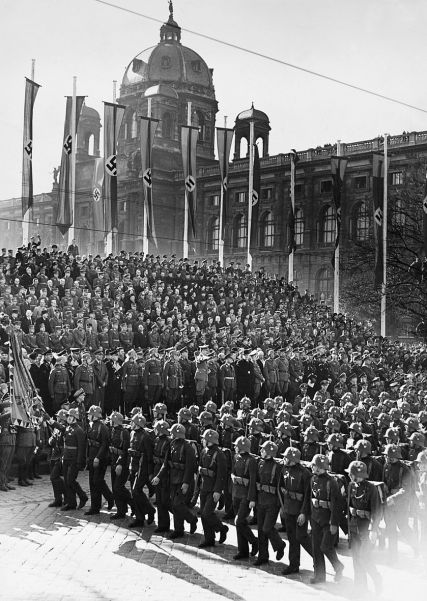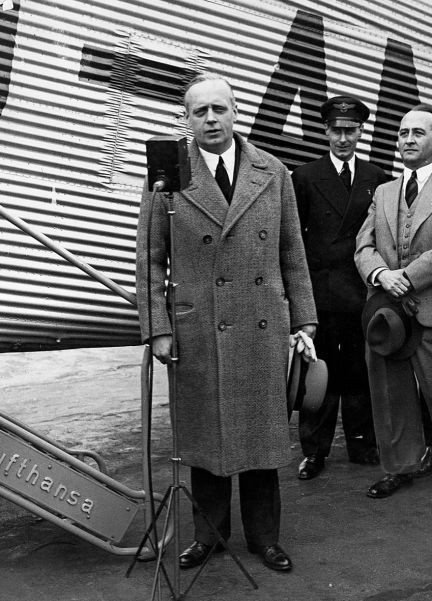12 March
Austria, Politics


The Anschluss (Union) with Austria. Seyss-Inquart becomes Reich Governor of Ostmark. All laws of Germany, including racial laws, are now in operation in Austria.
In July 1934, Austrian and German Nazis together attempted a coup but were unsuccessful. An authoritarian right-wing government then took power in Austria and kept perhaps half the population from voicing legitimate dissent; that cleavage prevented concerted resistance to the developments of 1938. In February 1938 Hitler invited the Austrian Chancellor Kurt von Schuschnigg to Germany and forced him to agree to give the Austrian Nazis virtually a free hand. Schuschnigg later repudiated the agreement and announced a plebiscite on the Anschluss question. He was bullied into cancelling the plebiscite, and he obediently resigned, ordering the Austrian Army not to resist the Germans. President Wilhelm Miklas of Austria refused to appoint the Austrian Nazi leader Arthur Seyss-Inquart as chancellor. The German Nazi minister Hermann Göring ordered Seyss-Inquart to send a telegram requesting German military aid, but he refused, and the telegram was sent by a German agent in Vienna. On March 12 Germany invaded, and the enthusiasm that followed persuaded Hitler to annex Austria outright on March 13. A controlled plebiscite of April 10 gave a 99.7 percentW approval.
